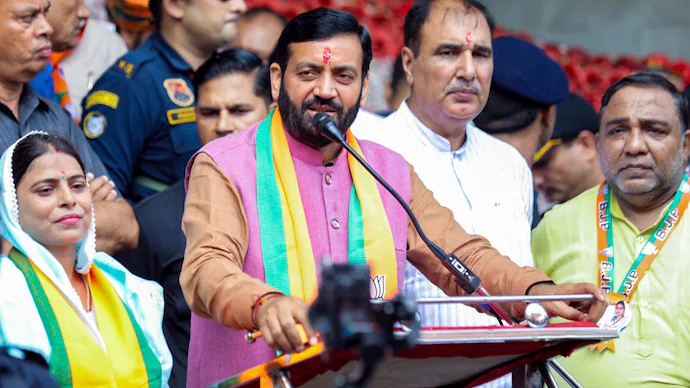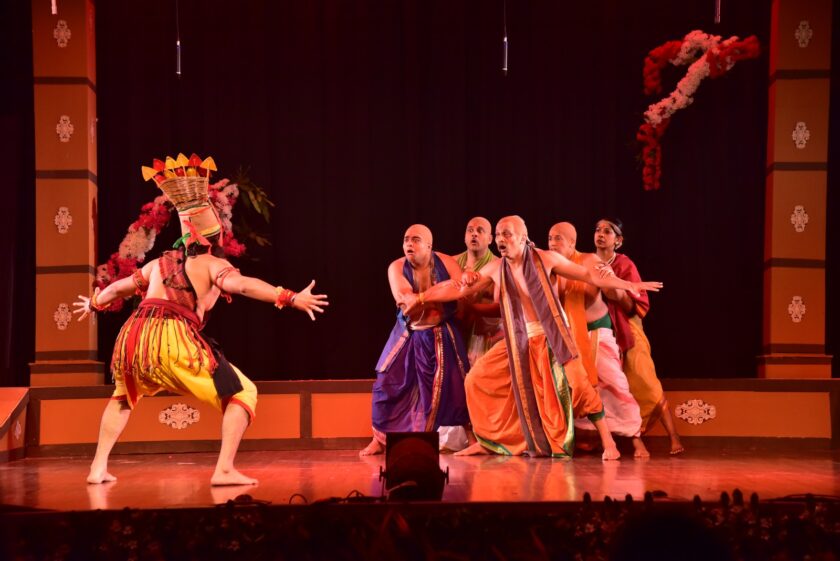Gurugram: The recent Bharatiya Janata Party (BJP) victory in Haryana, though part of a state-level election, holds significant implications for the party on a broader national level. Haryana, often considered a politically strategic state, shares borders with Delhi and Punjab and has long been a stronghold of agrarian politics and Jat-dominated voter blocs. BJP’s win in this key state is more than just a regional triumph; it signals the party’s growing acceptance across diverse voter bases and regions, its ability to handle agrarian unrest, and its adeptness at using national narratives to secure state elections.
1. Strengthening BJP’s Presence in the North
The victory in Haryana consolidates the BJP’s position in northern India, where it already enjoys considerable influence. Along with Uttar Pradesh and Uttarakhand, Haryana’s victory bolsters the party’s hold in the Hindi-speaking belt. These states form the heartland of the BJP’s voter base, where the party has historically performed well in both national and regional elections. Winning Haryana once again reaffirms the party’s dominance in this politically crucial region.
Haryana’s proximity to the national capital, Delhi, adds to the significance. As Haryana often shares social, cultural, and economic linkages with Delhi, a win here is a precursor to influencing voter behavior in Delhi itself. The BJP has struggled to gain control in Delhi’s state elections, and a victory in Haryana could offer insights and strategies for future contests in the capital city.
2. The Agrarian Vote: A Shift in Dynamics?
Haryana is primarily an agrarian state with a large rural population that has traditionally leaned towards regional parties like the Indian National Lok Dal (INLD) or Congress, which relied heavily on Jat votes. BJP’s ability to secure victory in the face of this deeply entrenched agrarian identity is a major achievement. This is particularly significant given the recent history of farmer protests that rocked the state over issues like agricultural reforms and the contentious farm laws.
The fact that BJP managed to either pacify or sidestep the ire of these communities showcases its political acumen. This victory could signal a shift in agrarian voter dynamics, where the Jat and rural votes may no longer be guaranteed for regional or opposition parties. While Jat-dominated politics once held sway in Haryana, the BJP has been able to diversify its appeal, pulling in votes from non-Jat communities, urban constituencies, and younger voters.
The party’s outreach to the non-Jat Other Backward Classes (OBCs) and Scheduled Castes (SCs) through targeted welfare programs and inclusive rhetoric played a crucial role in shaping this outcome. By extending benefits of central schemes such as the Pradhan Mantri Kisan Samman Nidhi (PM-KISAN), Ayushman Bharat, and Ujjwala Yojana, the BJP has positioned itself as a party that delivers tangible benefits to rural voters, thereby mitigating some of the backlash from the Jat farming community.
3. Nationalism as a Driving Force
Another crucial element that worked in the BJP’s favor in Haryana is its consistent use of nationalism as a central campaign plank. By framing the elections around national security, development, and the idea of a strong India, the party has managed to transcend regional issues and connect with voters on a broader, more emotional level.
Prime Minister Narendra Modi’s strongman image and the party’s emphasis on national pride through policies like the abrogation of Article 370 in Jammu & Kashmir and tough stances on terrorism resonated with voters. Haryana, with a high number of serving and retired military personnel, responded well to the party’s rhetoric on national security and respect for the armed forces. The BJP’s nationalistic narrative helped steer the conversation away from local issues like unemployment or farmer distress and instead focused voters’ attention on broader national objectives.
This use of nationalism, however, also raises a broader question: can the BJP continue to rely on national narratives to win state elections, or will local governance and development eventually become the deciding factors? In Haryana’s case, it appears that nationalism, combined with a carefully curated welfare program, was sufficient, but this might not be a one-size-fits-all strategy for future elections in more politically complex states.

4. Challenges and Lessons Learned
While the BJP’s victory in Haryana is a major success, it was not without challenges. The party faced stiff opposition from Congress, which campaigned heavily on local issues like unemployment, farmer grievances, and alleged corruption. Moreover, the BJP had to work around internal factionalism within the state unit, which threatened to derail its campaign.
These challenges highlight the need for the BJP to be mindful of regional dynamics, internal unity, and governance issues at the state level. The party’s victory in Haryana suggests that it can effectively manage these challenges, but future state elections, especially in more electorally volatile regions, may require a more localized approach.
Moreover, the party’s reliance on national issues and Modi’s charisma as the face of the campaign raises the question of whether it is building a strong enough local leadership in Haryana. Chief Minister Manohar Lal Khattar has been seen as a dependable administrator, but he does not have the same mass appeal as some of his predecessors. Nayab Singh Saini meanwhile is making the right noises with a stupendous verdict. For the BJP to maintain its grip on Haryana in future elections, it will need to foster local leaders with greater visibility and popularity.
5. Implications for Upcoming Elections
BJP’s win in Haryana has immediate and long-term implications for upcoming elections across India. The party’s ability to secure victories in key states like Haryana despite internal challenges and opposition campaigns signals its continued dominance in the national political landscape. It also provides a blueprint for how the party can approach state elections in the future, particularly in agrarian regions.
For instance, states like Punjab and Uttar Pradesh—which share similar socio-economic and agrarian issues—will be closely watching BJP’s performance in Haryana. A win in Haryana could provide the BJP with momentum and strategic insights as it prepares for the State Elections. In particular, it highlights the importance of weaving together regional concerns with national narratives to craft a compelling electoral strategy.
Additionally, the BJP’s success in winning over non-Jat communities and building a broader base could help the party replicate similar strategies in other states where caste-based politics play a major role, such as Bihar and Maharashtra. The party’s message of inclusivity, bolstered by targeted welfare schemes, could continue to resonate with voters, especially in rural and economically weaker sections.
6. Future of Opposition in Haryana
For opposition parties like the Congress and regional players such as the Indian National Lok Dal (INLD), BJP’s victory is a wake-up call. The traditional strongholds of these parties, particularly in rural and Jat-dominated areas, have been eroded by the BJP’s outreach to other communities and its focus on development and welfare. The challenge for the opposition will be to find a way to counter the BJP’s nationalistic rhetoric and develop a compelling narrative that resonates with both urban and rural voters.
The BJP’s win in Haryana is a crucial piece in the party’s overall national strategy. By securing a victory in this politically significant state, the BJP has reinforced its dominance in northern India, broadened its voter base, and demonstrated its ability to manage agrarian concerns while pushing a nationalistic agenda. The win signals the party’s growing acceptance across diverse voter demographics and regions, positioning it strongly for upcoming elections, including the state polls. For both the BJP and the opposition, Haryana serves as a microcosm of the larger political dynamics at play in India today.





